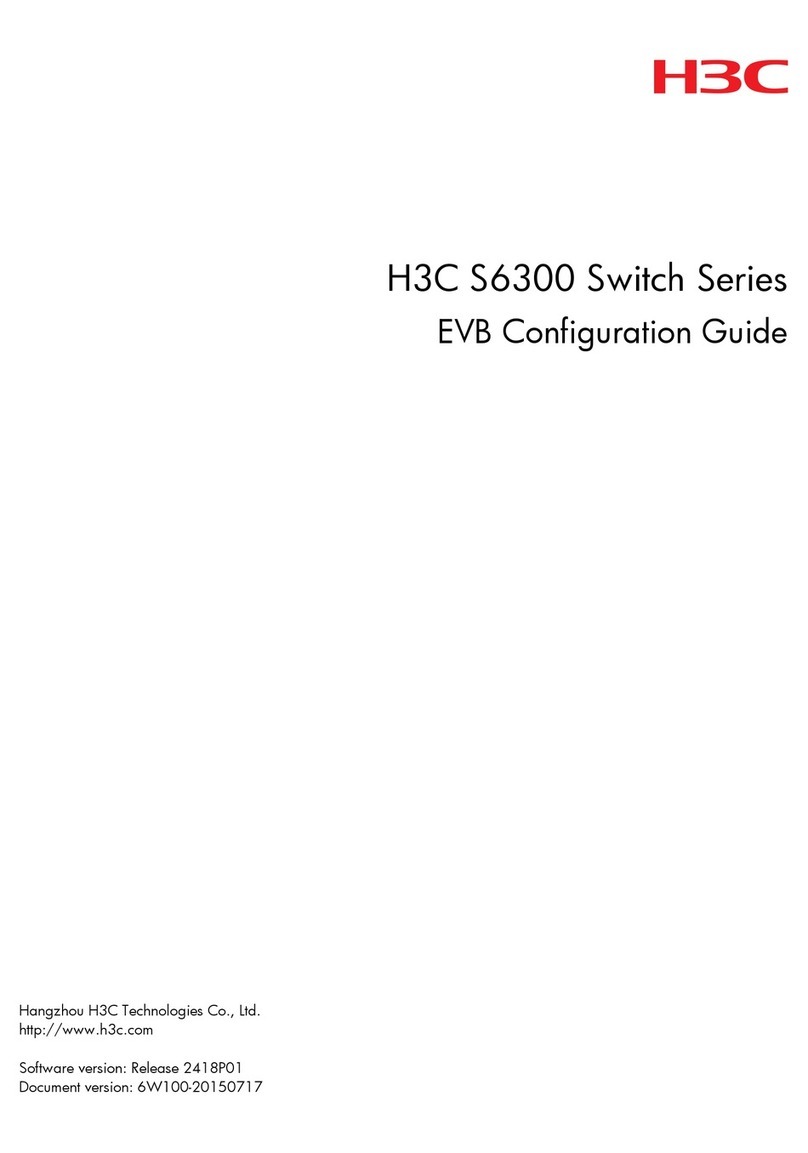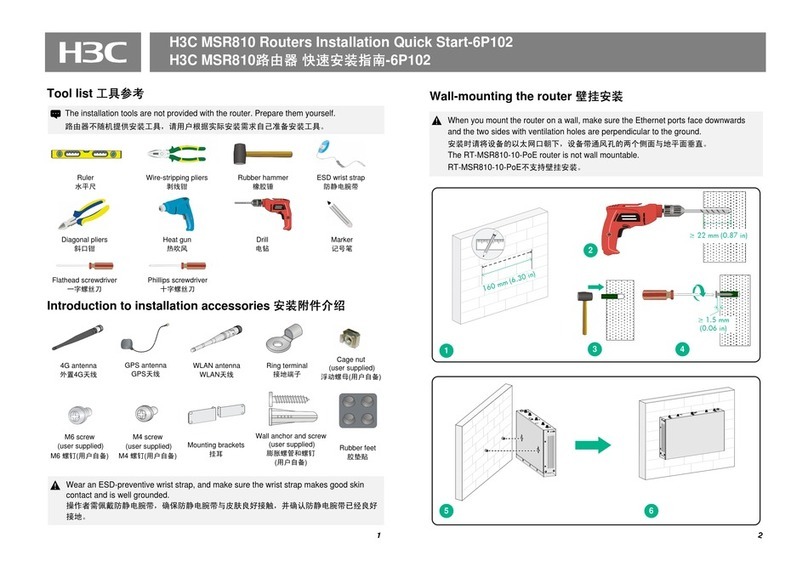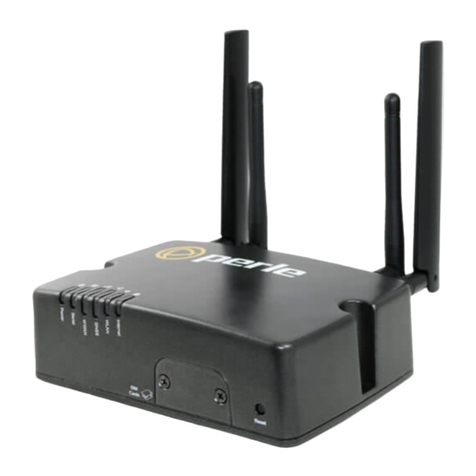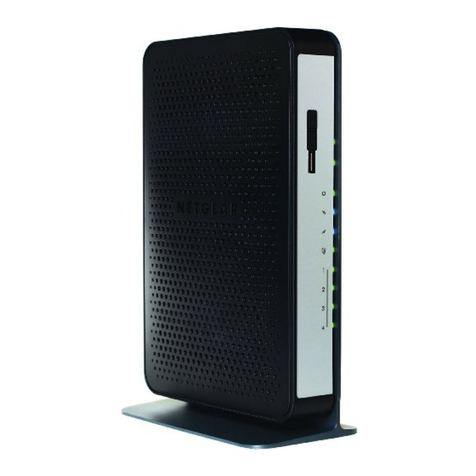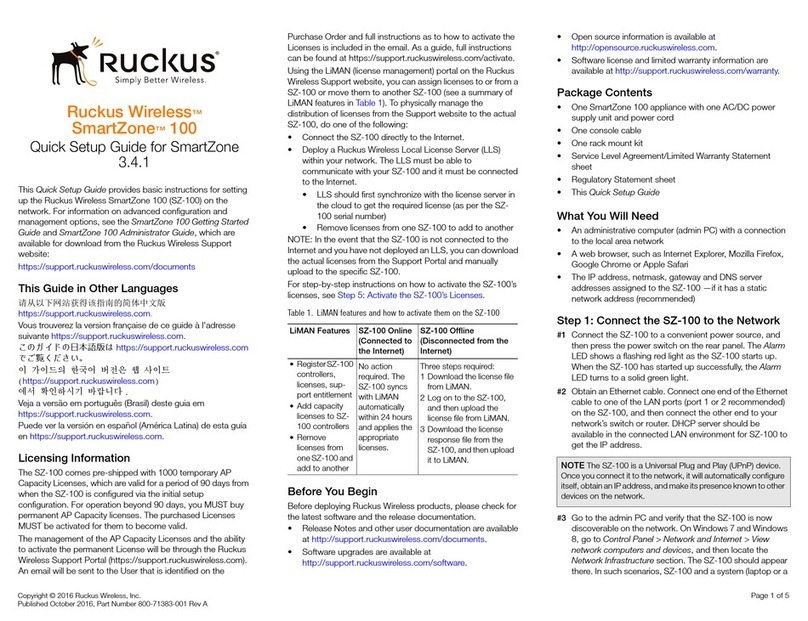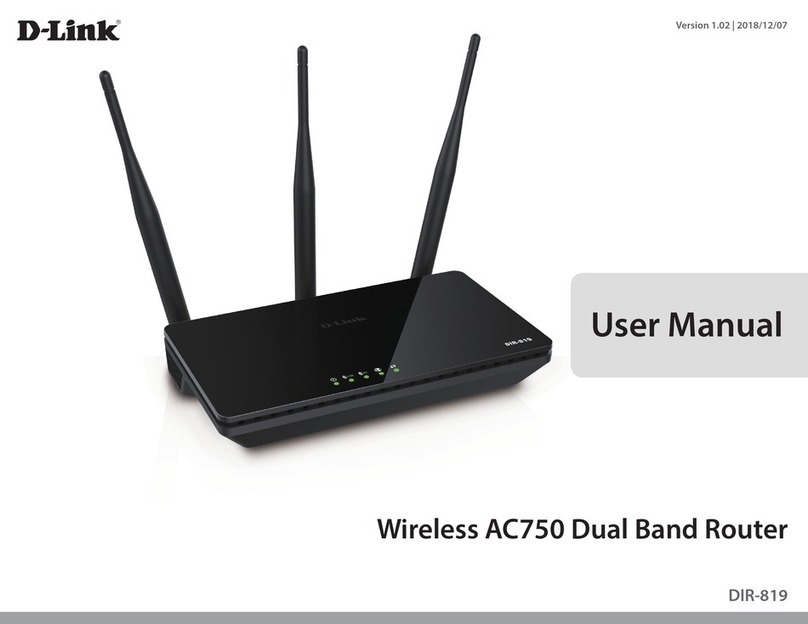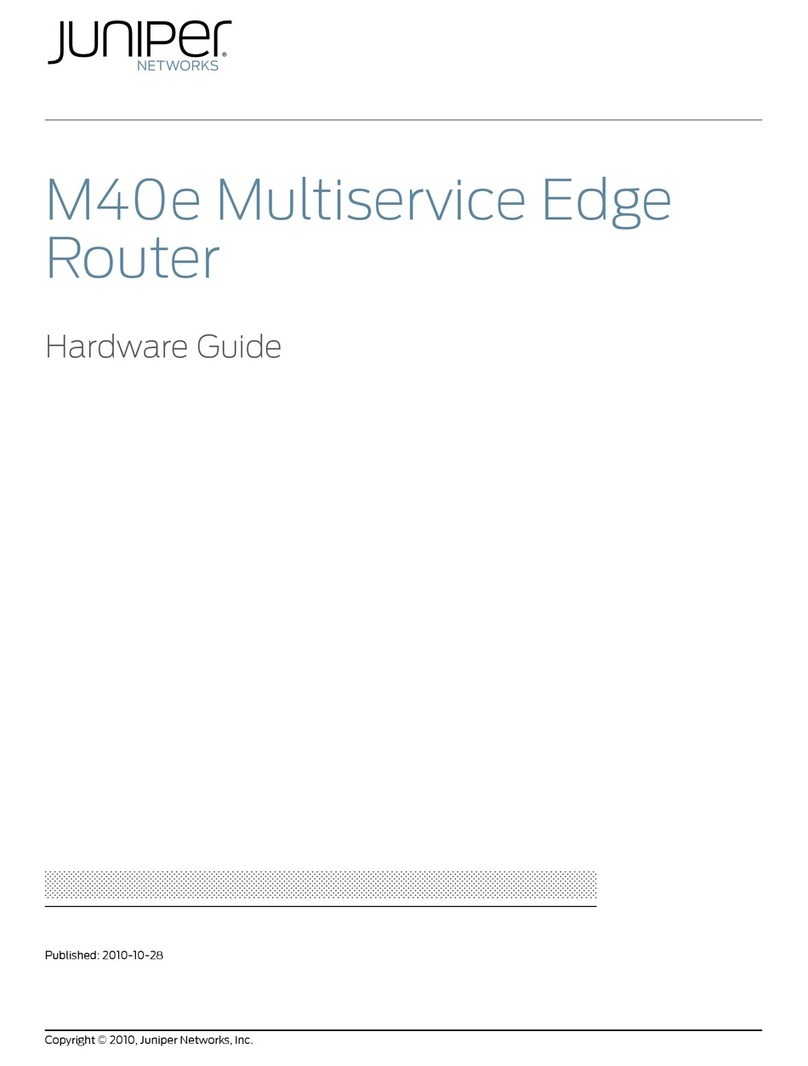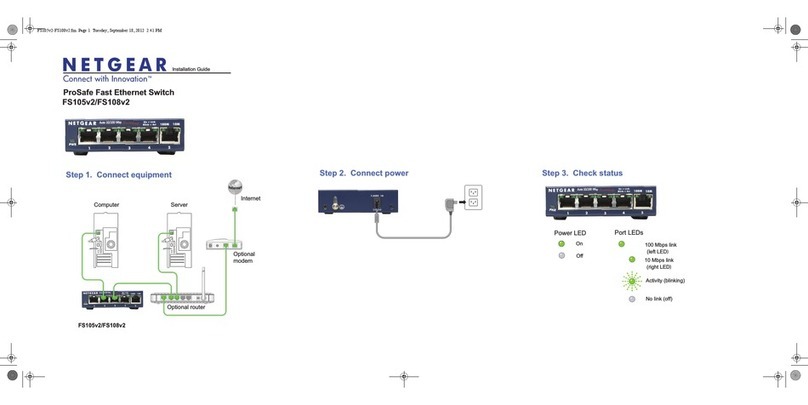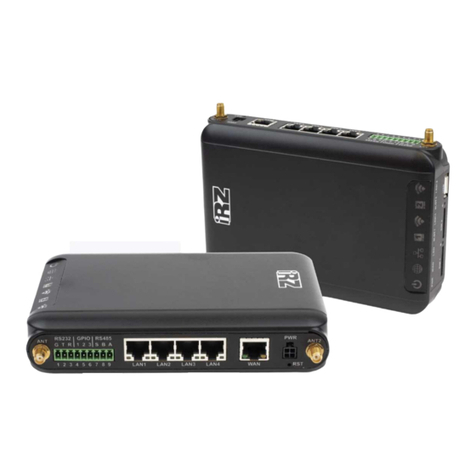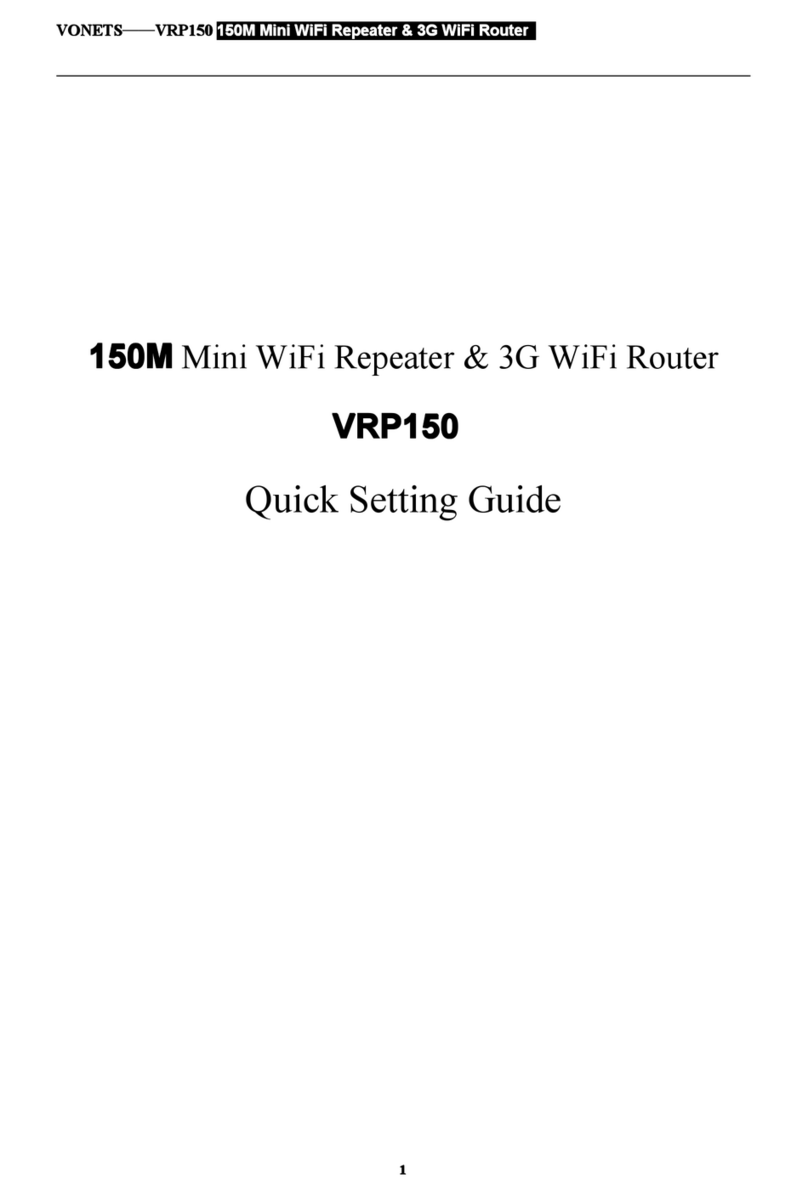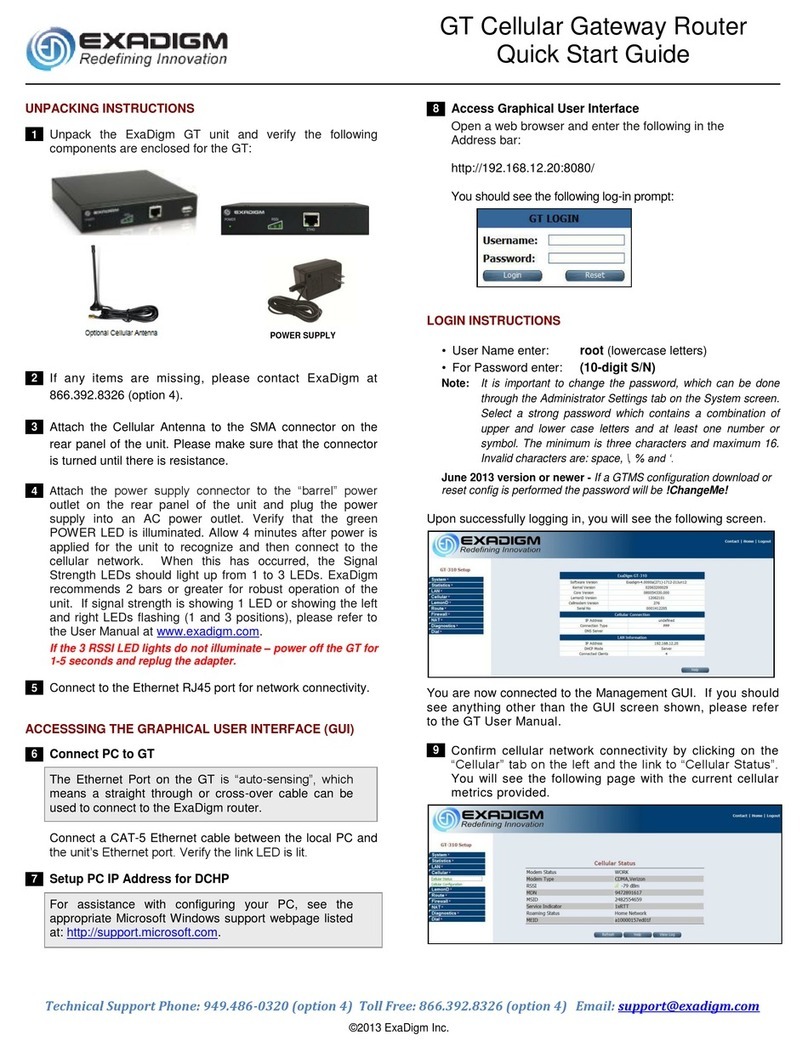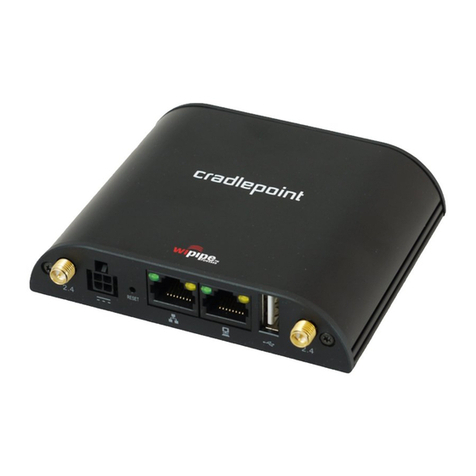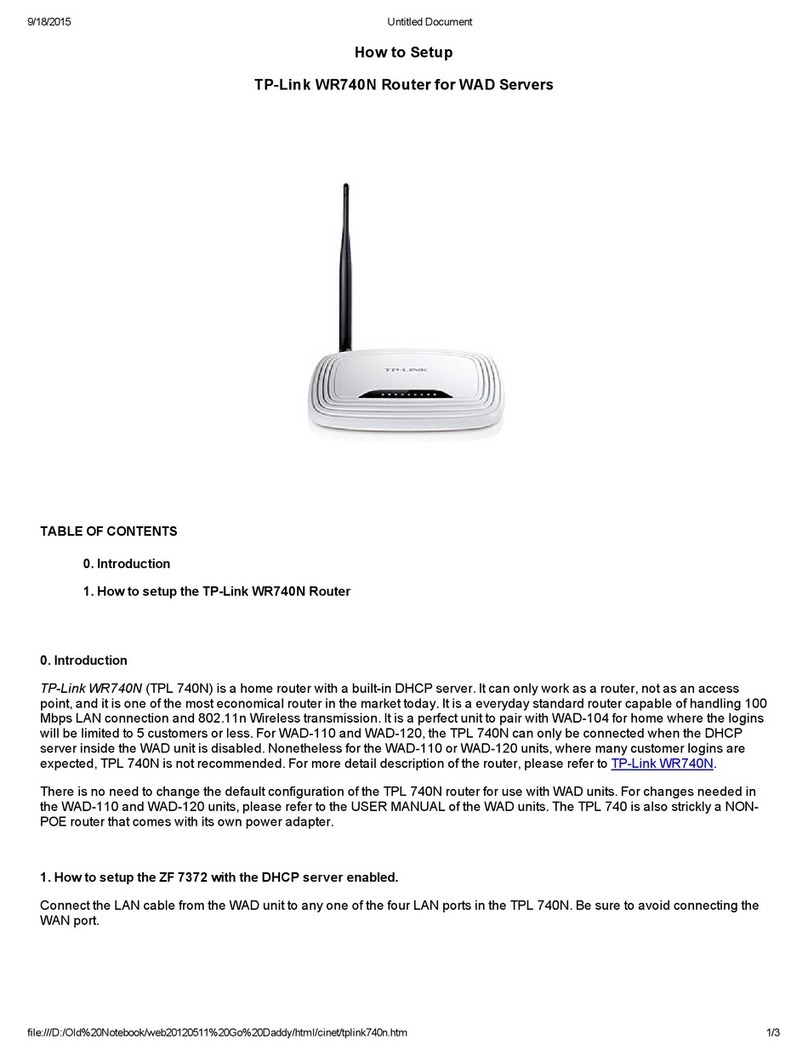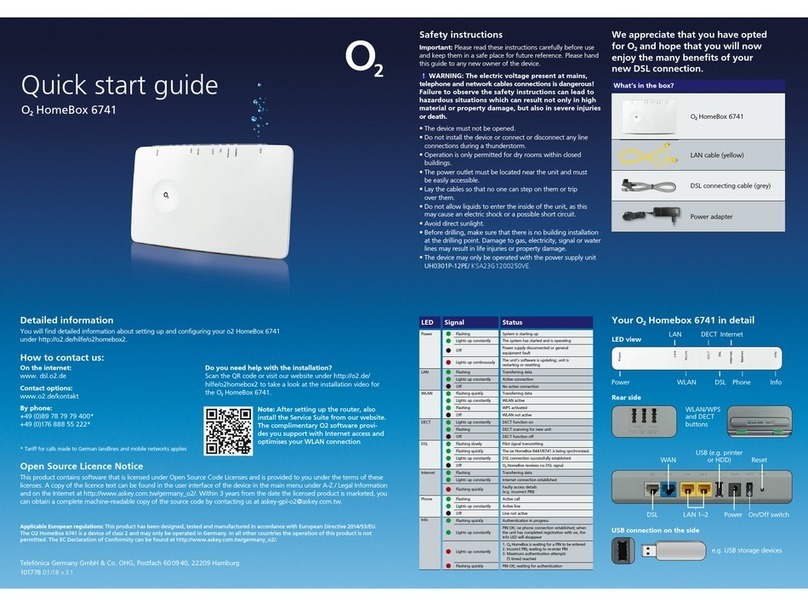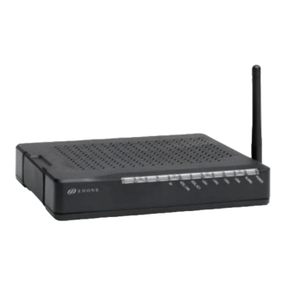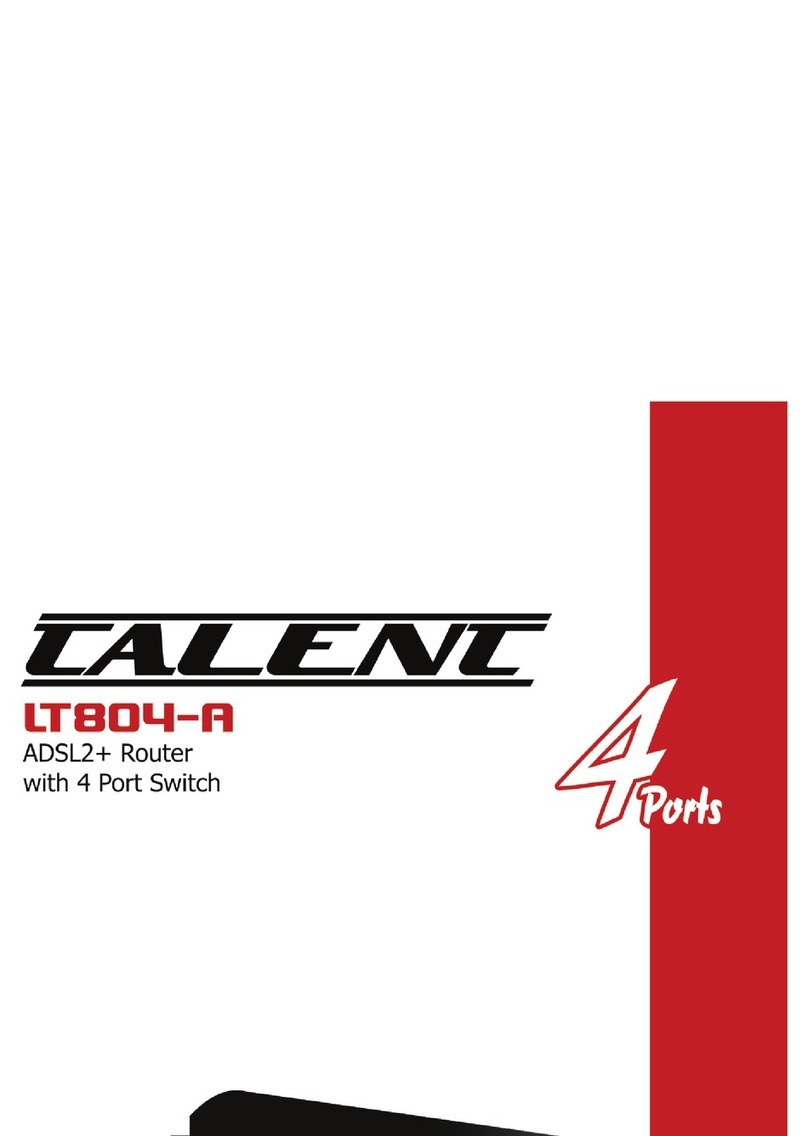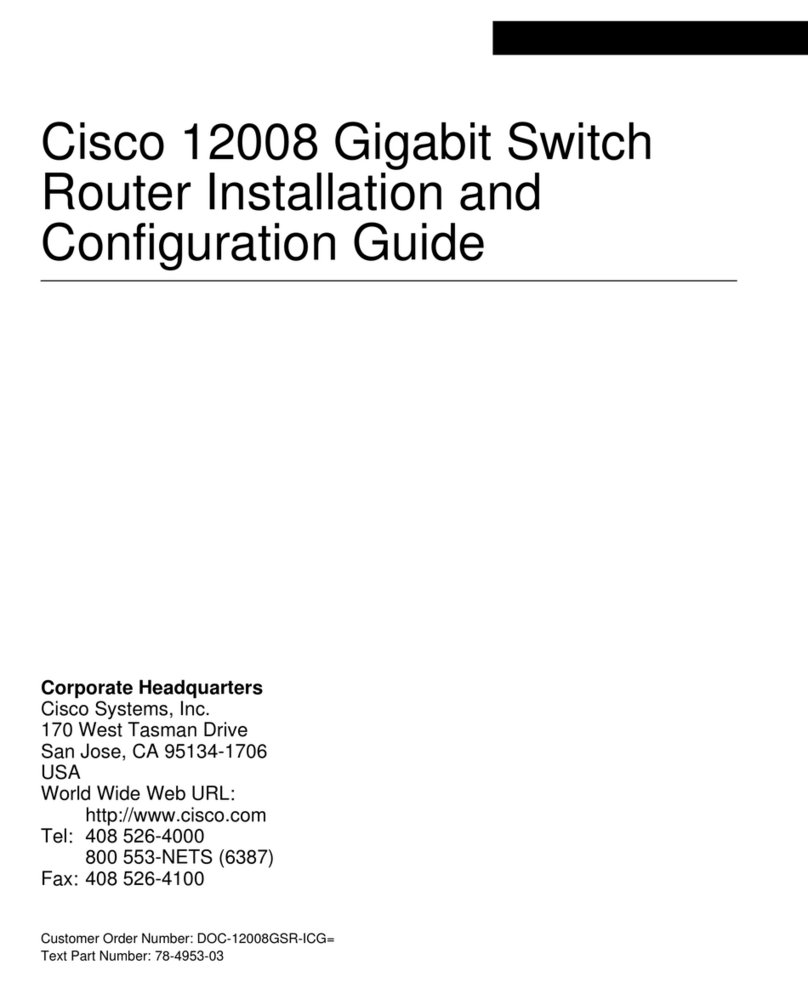H3C MSR Series Installation manual

H3C MSR Router Series
Comware 5 Layer 2 - LAN Switching
Command Reference
New H3C Technologies Co., Ltd.
http://www.h3c.com
Software version: MSR-CMW520-R2516
Document version: 20180820-C-1.13

Copyright © 2006-2018, New H3C Technologies Co., Ltd. and its licensors
All rights reserved
No part of this manual may be reproduced or transmitted in any form or by any means without prior written
consent of New H3C Technologies Co., Ltd.
Trademarks
H3C, , H3CS, H3CIE, H3CNE,Aolynk, , H3Care, , IRF, NetPilot, Netflow, SecEngine,
SecPath, SecCenter, SecBlade, Comware, ITCMM and HUASAN are trademarks of New H3C Technologies
Co., Ltd.
All other trademarks that may be mentioned in this manual are the property of their respective owners.
Notice
The information in this document is subject to change without notice. All contents in this document, including
statements, information, and recommendations, are believed to be accurate, but they are presented without
warranty of any kind, express or implied. H3C shall not be liable for technical or editorial errors or omissions
contained herein.

Preface
This command reference describes the multicast configuration commands for Ethernet link
aggregation, Port isolation, MSTP, VLAN, GVRP, LLDP, and so on.
This preface includes the following topics about the documentation:
•Audience.
•Conventions.
•Documentation feedback.
Audience
This documentation is intended for:
•Network planners.
•Field technical support and servicing engineers.
•Network administrators working with the routers.
Conventions
The following information describes the conventions used in the documentation.
Command conventions
Convention Description
Boldface Bold text represents commands and keywords that you enter literally as shown.
Italic Italic text represents arguments that you replace with actual values.
[ ] Square brackets enclose syntax choices (keywords or arguments) that are optional.
{ x | y | ... }
Braces enclose a set of required syntax choices separated by vertical bars, from which
you select one.
[ x | y | ... ]
Square brackets enclose a set of optional syntax choices separated by vertical bars,
from which you select one or none.
{ x | y | ... } *
Asterisk marked braces enclose a set of required syntax choices separated by vertical
bars, from which you select a minimum of one.
[ x | y | ... ] *
Asterisk marked square brackets enclose optional syntax choices separated by vertical
bars, from which you select one choice, multiple choices, or none.
&<1-n> The argument or keyword and argument combination before the ampersand (&) sign
can be entered 1 to n times.
# A line that starts with a pound (#) sign is comments.
GUI conventions
Convention Description
Boldface Window names, button names, field names, and menu items are in Boldface. For
example, the New User window opens; click OK.
> Multi-level menus are separated by angle brackets. For example, File > Create >
Folder.

Symbols
Convention Description
WARNING! An alert that calls attention to important information that if not understood or followed
can result in personal injury.
CAUTION: An alert that calls attention to important information that if not understood or followed
can result in data loss, data corruption, or damage to hardware or software.
IMPORTANT: An alert that calls attention to essential information.
NOTE: An alert that contains additional or supplementary information.
TIP: An alert that provides helpful information.
Network topology icons
Convention Description
Represents a generic network device, such as a router, switch, or firewall.
Represents a routing-capable device, such as a router or Layer 3 switch.
Represents a generic switch, such as a Layer 2 or Layer 3 switch, or a router that
supports Layer 2 forwarding and other Layer 2 features.
Represents an access controller, a unified wired-WLAN module, or the access
controller engine on a unified wired-WLAN switch.
Represents an access point.
Represents a wireless terminator unit.
Represents a wireless terminator.
Represents a mesh access point.
Represents omnidirectional signals.
Represents directional signals.
Represents a security product, such as a firewall, UTM, multiservice security
gateway, or load balancing device.
Represents a security module, such as a firewall, load balancing, NetStream, SSL
VPN, IPS, or ACG module.
Examples provided in this document
Examples in this document might use devices that differ from your device in hardware model,
configuration, or software version. It is normal that the port numbers, sample output, screenshots,
and other information in the examples differ from what you have on your device.
T
T
T
T

Documentation feedback
You can e-mail your comments about product documentation to info@h3c.com.
We appreciate your comments.

i
Contents
MAC address table configuration commands··········································1
display mac-address············································································································1
display mac-address aging-time ·····························································································2
display mac-address mac-learning··························································································3
mac-address (interface view) ·································································································4
mac-address (system view) ···································································································4
mac-address mac-learning disable··························································································6
mac-address max-mac-count·································································································6
mac-address timer···············································································································8
Layer 2 forwarding configuration commands ········································10
display mac-forwarding statistics ··························································································10
reset mac-forwarding statistics·····························································································11
VLAN configuration commands ·························································12
Basic VLAN configuration commands···························································································12
bandwidth························································································································12
default·····························································································································12
description·······················································································································13
display interface vlan-interface ·····························································································14
display vlan······················································································································17
interface vlan-interface ·······································································································18
ip address························································································································19
mac-address ····················································································································20
mtu·································································································································21
name······························································································································21
reset counters interface vlan-interface····················································································22
shutdown·························································································································22
vlan································································································································23
Port-based VLAN configuration commands ···················································································25
display port ······················································································································25
port ································································································································26
port access vlan················································································································26
port hybrid pvid·················································································································28
port hybrid vlan·················································································································29
port link-type ····················································································································31
port trunk permit vlan ·········································································································32
port trunk pvid···················································································································34
Super VLAN configuration commands ················································36
display supervlan ··············································································································36
subvlan ···························································································································38
supervlan·························································································································39
Voice VLAN configuration commands·················································40
display voice vlan oui ·········································································································40
display voice vlan state·······································································································41
voice vlan aging················································································································42
voice vlan enable ··············································································································43
voice vlan mac-address······································································································43
voice vlan mode auto ·········································································································44
voice vlan security enable ···································································································45
Spanning tree configuration commands ··············································47
active region-configuration ··································································································47
check region-configuration ··································································································47
display stp ·······················································································································48

ii
display stp abnormal-port····································································································53
display stp bpdu-statistics ···································································································54
display stp down-port ·········································································································57
display stp history··············································································································57
display stp region-configuration ····························································································58
display stp root ·················································································································59
display stp tc ····················································································································60
instance ··························································································································61
region-name·····················································································································62
reset stp··························································································································63
revision-level····················································································································63
stp bpdu-protection············································································································64
stp bridge-diameter············································································································65
stp compliance··················································································································65
stp config-digest-snooping···································································································67
stp cost ···························································································································68
stp edged-port ··················································································································69
stp enable························································································································71
stp loop-protection·············································································································72
stp max-hops····················································································································73
stp mcheck ······················································································································73
stp mode ·························································································································75
stp no-agreement-check ·····································································································75
stp pathcost-standard·········································································································76
stp point-to-point ···············································································································77
stp port priority··················································································································79
stp port-log·······················································································································80
stp priority························································································································81
stp region-configuration ······································································································81
stp root primary·················································································································82
stp root secondary·············································································································82
stp root-protection ·············································································································83
stp tc-protection ················································································································84
stp tc-protection threshold···································································································85
stp timer forward-delay·······································································································85
stp timer hello···················································································································86
stp timer max-age··············································································································87
stp timer-factor··················································································································88
stp transmit-limit················································································································88
vlan-mapping modulo·········································································································90
Ethernet link aggregation configuration commands································91
bandwidth························································································································91
default·····························································································································92
description·······················································································································93
display interface················································································································94
display lacp system-id ········································································································97
display link-aggregation member-port ····················································································98
display link-aggregation summary······················································································· 100
display link-aggregation verbose························································································· 101
enable snmp trap updown ································································································· 104
interface bridge-aggregation······························································································ 105
interface route-aggregation································································································ 106
lacp period short ············································································································· 107
lacp system-priority·········································································································· 107
link-aggregation mode······································································································ 108
link-aggregation port-priority ······························································································ 109
mtu······························································································································· 110
port link-aggregation group································································································ 110
reset counters interface ···································································································· 112
reset lacp statistics ·········································································································· 113
shutdown······················································································································· 113

iii
GVRP configuration commands ······················································ 115
display garp statistics······································································································· 115
display garp timer············································································································ 116
display gvrp local-vlan······································································································ 117
display gvrp state ············································································································ 117
display gvrp statistics ······································································································· 118
display gvrp status··········································································································· 119
display gvrp vlan-operation································································································ 120
garp timer hold················································································································ 121
garp timer join················································································································· 122
garp timer leave·············································································································· 123
garp timer leaveall··········································································································· 124
gvrp······························································································································ 124
gvrp registration·············································································································· 125
reset garp statistics·········································································································· 126
LLDP configuration commands ······················································· 128
display lldp local-information······························································································ 128
display lldp neighbor-information ························································································ 131
display lldp statistics ········································································································ 136
display lldp status············································································································ 137
display lldp tlv-config········································································································ 138
lldp admin-status············································································································· 140
lldp check-change-interval································································································· 141
lldp enable····················································································································· 141
lldp encapsulation snap ···································································································· 142
lldp fast-count················································································································· 142
lldp hold-multiplier ··········································································································· 143
lldp management-address-format string ··············································································· 144
lldp management-address-tlv····························································································· 144
lldp notification remote-change enable················································································· 145
lldp timer notification-interval······························································································ 145
lldp timer reinit-delay········································································································ 146
lldp timer tx-delay············································································································ 146
lldp timer tx-interval·········································································································· 147
lldp tlv-enable················································································································· 148
lldp voice-vlan················································································································· 150
Port isolation configuration commands·············································· 151
display port-isolate group ·································································································· 151
port-isolate enable··········································································································· 151
VLAN termination configuration commands········································ 154
dot1q ethernet-type·········································································································· 154
vlan-type dot1q vid ·········································································································· 155
Index························································································· 157

1
MAC address table configuration
commands
The MAC address table can contain only Layer 2 Ethernet ports.
This document covers only the static, dynamic, and destination blackhole MAC address entries.
display mac-address
Use display mac-address to display information about the MAC address table.
Syntax
display mac-address [ mac-address [ vlan vlan-id ] | [ [ dynamic | static ] [ interface interface-type
interface-number ] | blackhole ] [ vlan vlan-id ] [ count ] ] [ |{ begin | exclude | include }
regular-expression ]
Views
Any view
Default command level
1: Monitor level
Parameters
blackhole: Displays destination blackhole MAC address entries.
vlan vlan-id: Specifies a VLAN by its ID in the range of 1 to 4094.
count: Displays the number of MAC address entries specified by related parameters in the
command. When this keyword is used, the command displays only the number of specified MAC
address entries, rather than related information about these MAC address entries.
mac-address: Displays MAC address entries of a specified MAC address, in the format of H-H-H.
dynamic: Displays dynamic MAC address entries, which can be aged.
static: Displays static MAC address entries, which do not age.
interface interface-type interface-number: Displays the MAC address learning status of the
specified interface. interface-type interface-number specifies an interface by its type and number.
|: Filters command output by specifying a regular expression. For more information about regular
expressions, see Fundamentals Configuration Guide.
begin: Displays the first line that matches the specified regular expression and all lines that follow.
exclude: Displays all lines that do not match the specified regular expression.
include: Displays all lines that match the specified regular expression.
regular-expression: Specifies a regular expression, a case-sensitive string of 1 to 256 characters.
Examples
# Display the MAC address entry for MAC address 000f-e201-0101.
<Sysname> display mac-address 000f-e201-0101
MAC ADDR VLAN ID STATE PORT INDEX AGING TIME(s)
000f-e201-0101 1 Learned Ethernet1/1 AGING
--- 1 mac address(es) found ---

2
Table 1 Command output
Field Description
MAC ADDR MAC address.
VLAN ID ID of the VLAN to which the MAC address belongs.
STATE
State of a MAC address entry:
•Config static—Static entry manually configured by the user.
•Config dynamic—Dynamic entry manually configured by the user.
•Learned—Entry learned by the device.
•Blackhole—Destination blackhole entry.
PORT INDEX Number of the port corresponding to the MAC address. Packets destined to
this MAC address are sent out of this port. It is displayed as N/A for a
blackhole MAC address entry.
AGING TIME(s) Aging time:
•AGING—The entry is aging.
•NOAGED—The entry does not age.
1 mac address(es) found One MAC address entry is found.
Related commands
•mac-address (system view)
•mac-address (interface view)
•mac-address timer
display mac-address aging-time
Use display mac-address aging-time to display the aging time of dynamic entries in the MAC
address table.
Syntax
display mac-address aging-time [ |{ begin | exclude | include } regular-expression ]
Views
Any view
Default command level
1: Monitor level
Parameters
|: Filters command output by specifying a regular expression. For more information about regular
expressions, see Fundamentals Configuration Guide.
begin: Displays the first line that matches the specified regular expression and all lines that follow.
exclude: Displays all lines that do not match the specified regular expression.
include: Displays all lines that match the specified regular expression.
regular-expression: Specifies a regular expression, a case-sensitive string of 1 to 256 characters.
Examples
# Display the aging time of dynamic entries in the MAC address table.
<Sysname> display mac-address aging-time
Mac address aging time: 300s

3
The output shows that the aging time of dynamic entries in the MAC address table is 300 seconds.
Related commands
•mac-address (system view)
•mac-address (interface view)
•mac-address timer
•display mac-address
display mac-address mac-learning
Use display mac-address mac-learning to display the MAC address learning status of the
specified or all Layer 2 Ethernet ports.
Syntax
display mac-address mac-learning [ interface-type interface-number ] [ |{ begin | exclude |
include } regular-expression ]
Views
Any view
Default command level
1: Monitor level
Parameters
interface-type interface-number: Specifies an interface by its type and number.
|: Filters command output by specifying a regular expression. For more information about regular
expressions, see Fundamentals Configuration Guide.
begin: Displays the first line that matches the specified regular expression and all lines that follow.
exclude: Displays all lines that do not match the specified regular expression.
include: Displays all lines that match the specified regular expression.
regular-expression: Specifies a regular expression, a case-sensitive string of 1 to 256 characters.
Examples
# Display MAC address learning status of all Ethernet ports.
<Sysname> display mac-address mac-learning
Mac address learning status of the switch: enable
PortName Learning Status
Ethernet1/1 enable
Ethernet1/2 enable
Ethernet1/3 enable
Ethernet1/4 enable
Table 2 Command output
Field Description
Mac-address learning status of the switch Global MAC address learning status (enabled or disabled).
PortName Port name.
Learning Status MAC address learning status (enabled or disabled) for a port.

4
mac-address (interface view)
Use mac-address to add or modify a MAC address entry on a specified interface.
Use undo mac-address to remove a MAC address entry on the interface.
Syntax
mac-address { dynamic | static }mac-address vlan vlan-id
undo mac-address { dynamic | static }mac-address vlan vlan-id
Default
No MAC address entry is configured.
Views
Layer 2 Ethernet interface view
Default command level
2: System level
Parameters
dynamic: Specifies dynamic MAC address entries. These entries can age.
static: Specifies static MAC address entries. They do not age, but you can add or remove them.
mac-address: Specifies a MAC address in the format of H-H-H, where 0s at the beginning of each H
(16-bit hexadecimal digit) can be omitted. For example, entering "f-e2-1" indicates that the MAC
address is "000f-00e2-0001."
vlan vlan-id: Specifies an existing VLAN to which the Ethernet interface belongs. The value range for
the vlan-id argument is 1 to 4094.
Usage guidelines
The MAC address entries configuration cannot survive a reboot unless you save it. However, the
dynamic MAC address entries are lost at next reboot regardless of whether you save the
configuration or not.
Examples
# Add a static entry for MAC address 000f-e201-0101 on port Ethernet 1/1 that belongs to VLAN 2.
<Sysname> system-view
[Sysname] interface ethernet 1/1
[Sysname-Ethernet1/1] mac-address static 000f-e201-0101 vlan 2
Related commands
display mac-address
mac-address (system view)
Use mac-address to add or modify a MAC address entry.
Use undo mac-address to remove one or all MAC address entries.
Syntax
mac-address blackhole mac-address vlan vlan-id
mac-address { dynamic | static }mac-address interface interface-type interface-number vlan
vlan-id
undo mac-address [ { dynamic | static }mac-address interface interface-type interface-number
vlan vlan-id ]

5
undo mac-address [ blackhole | dynamic | static ][ mac-address ] vlan vlan-id
undo mac-address [dynamic | static ]mac-address interface interface-type interface-number
vlan vlan-id
undo mac-address [ dynamic |static ]interface interface-type interface-number
Default
No MAC address entry is configured.
Views
System view
Default command level
2: System level
Parameters
blackhole: Specifies destination blackhole MAC address entries. These entries do not age, but you
can add or remove them. The packets whose destination MAC addresses match destination
blackhole MAC address entries are dropped.
mac-address: Specifies a MAC address in the format of H-H-H, where 0s at the beginning of each H
(16-bit hexadecimal digit) can be omitted. For example, entering "f-e2-1" indicates that the MAC
address is "000f-00e2-0001."
vlan vlan-id: Specifies an existing VLAN to which the Ethernet interface belongs. The value range for
the vlan-id argument is 1 to 4094.
dynamic: Specifies dynamic MAC address entries, which can be aged.
static: Specifies static MAC address entries. These entries do not age, but you can add or remove
them.
interface interface-type interface-number: Specifies an outbound interface by its type and number.
Usage guidelines
A static or blackhole MAC address entry will not be overwritten by a dynamic MAC address entry. A
dynamic MAC address entry can be overwritten by a static or blackhole MAC address entry.
If you execute the undo mac-address command without specifying any parameters, this command
deletes all unicast MAC address entries.
You can delete all the MAC address entries of a VLAN, or you can choose to delete a specific type
(dynamic, static, or blackhole) of MAC address entries only. You can single out certain ports and
delete the corresponding unicast MAC address entries.
The MAC address entries configuration cannot survive a reboot unless you save it. However, the
dynamic MAC address entries are lost at next reboot regardless of whether you save the
configuration or not.
Examples
# Add a static entry for MAC address 000f-e201-0101. All frames destined to this MAC address are
sent out of port Ethernet 1/1 that belongs to VLAN 2.
<Sysname> system-view
[Sysname] mac-address static 000f-e201-0101 interface ethernet 1/1 vlan 2
Related commands
display mac-address

6
mac-address mac-learning disable
Use mac-address mac-learning disable to disable MAC address learning on a Layer 2 Ethernet
interface.
Use undo mac-address mac-learning disable to enable MAC address learning on a Layer 2
Ethernet interface.
Syntax
mac-address mac-learning disable
undo mac-address mac-learning disable
Default
MAC address learning is enabled.
Views
Layer 2 Ethernet interface view, port group view
Default command level
2: System level
Usage guidelines
Follow these guidelines when you configure MAC address learning:
•You can disable MAC address learning to prevent the MAC address table from being saturated.
For example, when your device is being attacked by many packets with different source MAC
addresses, it affects the update of the MAC address table.
•Because disabling MAC address learning might result in broadcast storms, enable broadcast
storm suppression after you disable MAC address learning on a port.
The learned MAC addresses are removed after MAC address learning is disabled.
Examples
# Disable MAC address learning on port Ethernet 1/1.
<Sysname> system-view
[Sysname] interface ethernet 1/1
[Sysname-Ethernet1/1] mac-address mac-learning disable
Related commands
display mac-address mac-learning
mac-address max-mac-count
Use mac-address max-mac-count count to configure the maximum number of MAC addresses
that can be learned on a port.
Use mac-address max-mac-count disable-forwarding to disable the device from forwarding
frames with unknown source MAC addresses after the number of learned MAC addresses reaches
the upper limit.
Use undo mac-address max-mac-count to restore the default maximum number of MAC
addresses that can be learned on an Ethernet port.
Use undo mac-address max-mac-count disable-forwarding to allow the device to forward
frames received on an Ethernet port with unknown source MAC addresses after the number of
learned MAC addresses reaches the upper limit.

7
Syntax
mac-address max-mac-count { count | disable-forwarding }
undo mac-address max-mac-count [ disable-forwarding ]
Default
The maximum number of MAC addresses that can be learned on a port varies with device models,
and frames received are forwarded when the upper limit is reached.
Views
Layer 2 Ethernet interface view, port group view
Default command level
2: System level
Parameters
count: Sets the maximum number of MAC addresses that can be learned on a port. When the
argument takes 0, the port is not allowed to learn MAC addresses.
The following matrix shows the count argument and hardware compatibility:
Hardware Argument compatibility Value range
MSR800 No N/A
MSR 900 No N/A
MSR900-E No N/A
MSR 930 No N/A
MSR 20-1X No N/A
MSR 20 No N/A
MSR 30 Supported only on an MIM-FSW module
•MSR 30-11E and MSR 30-11F: 0 to
8191
•Others: 0 to 4096
MSR 50 Supported only on an FIC-FSW module 0 to 4096
MSR 2600 Yes •MSR 2600-10: 0 to 4096
•MSR 2600-17: 0 to 8192
MSR3600-51F Supported only on an FIC-FSW module 0 to 8191
disable-forwarding: Disables the device from forwarding frames with unknown source MAC
addresses after the number of learned MAC addresses reaches the upper limit. Frames with the
source MAC addresses listed in the MAC address table are forwarded.
Usage guidelines
If the command is executed in interface view, the configuration takes effect on the interface. If the
command is executed in port group view, the configuration takes effect on all ports belonging to the
port group.
The following matrix shows the command and hardware compatibility:
Hardware Command compatibility
MSR800 No
MSR 900 No
MSR900-E No

8
Hardware Command compatibility
MSR 930 No
MSR 20-1X No
MSR 20 No
MSR 30 Supported only on an MIM-FSW module
MSR 50 Supported only on an FIC-FSW module
MSR 2600 Yes
MSR3600-51F Supported only on an FIC-FSW module
Examples
# Set the maximum number of MAC addresses that can be learned on port Ethernet 1/1 to 600. After
this upper limit is reached, frames received with unknown source MAC addresses on the port are not
forwarded.
<Sysname> system-view
[Sysname] interface ethernet 1/1
[Sysname-Ethernet1/1] mac-address max-mac-count 600
[Sysname-Ethernet1/1] mac-address max-mac-count disable-forwarding
Related commands
•mac-address (system view)
•mac-address (interface view)
•mac-address timer
mac-address timer
Use mac-address timer to configure the aging timer for dynamic MAC address entries.
Use undo mac-address timer to restore the default.
Syntax
mac-address timer {aging seconds |no-aging }
undo mac-address timer aging
Default
The aging timer for dynamic MAC address entries is 300 seconds.
Views
System view
Default command level
2: System level
Parameters
aging seconds: Sets an aging timer for dynamic MAC address entries, in the range of 10 to 4080
seconds.
no-aging: Sets dynamic MAC address entries not to age.
Usage guidelines
Follow these guidelines to set the aging timer appropriately:

9
•A long aging interval causes the MAC address table to retain outdated entries and fail to
accommodate the latest network changes.
•Ashort aging interval results in removal of valid entries and unnecessary broadcasts that affect
the performance of the device.
Examples
# Set the aging timer for dynamic MAC address entries to 500 seconds.
<Sysname> system-view
[Sysname] mac-address timer aging 500

10
Layer 2 forwarding configuration
commands
display mac-forwarding statistics
Use display mac-forwarding statistics to display Layer 2 forwarding statistics.
Syntax
display mac-forwarding statistics [ interface interface-type interface-number ] [ |{ begin |
exclude | include } regular-expression ]
Views
Any view
Default command level
1: Monitor level
Parameters
interface interface-type interface-number: Displays the statistics of an interface specified by its type
and number.
|: Filters command output by specifying a regular expression. For more information about regular
expressions, see Fundamentals Configuration Guide.
begin: Displays the first line that matches the specified regular expression and all lines that follow.
exclude: Displays all lines that do not match the specified regular expression.
include: Displays all lines that match the specified regular expression.
regular-expression: Specifies a regular expression, a case-sensitive string of 1 to 256 characters.
Usage guidelines
If no parameter is specified, Layer 2 forwarding statistics for all interfaces is displayed.
Examples
# Display the Layer 2 forwarding statistics for all interfaces.
<Sysname> display mac-forwarding statistics
Total received: 888
Filtered:111 STP discarded:0
Broadcast:0 Multicast:0
Unknown Unicast:0 Invalid Tag:0
Total deliver to up: 111
L2 protocol:11 Local MAC address:100
Blackhole dropped:0
Total sent: 666
Filtered:0 STP discarded:0
# Display forwarding statistics of Ethernet 1/1.
<Sysname> display mac-forwarding statistics interface ethernet 1/1
Ethernet 1/1:
Input frames:100 Input bytes:23

11
Output frames:100 Output bytes:23
Filtered:0 Invalid Tag:0
Table 3 Command output
Field Description
Total received Total number of received Ethernet frames.
Filtered Number of frames filtered out by 802.1Q Tagged VLAN inbound filtering rules.
STP discarded Number of Ethernet frames dropped on the ingress ports blocked by STP.
Broadcast Number of received broadcast frames.
Multicast Number of received multicast frames.
Unknown unicast Number of received unknown unicast frames.
Invalid Tag Number of Ethernet frames dropped because of invalid tags.
At present, Ethernet frames with the VLAN ID as 0 or 0xFFF are dropped.
Total deliver to up Number of Ethernet frames delivered to upper layer protocols.
L2 protocol Number of Layer 2 protocol frames delivered to the upper layer.
Local MAC address Number of Ethernet frames with the destination being the MAC addresses of
local Layer 3 interfaces.
Blackhole dropped Number of frames dropped as they are destined to blackhole MAC addresses.
Total sent Total number of sent Ethernet frames.
Filtered Number of frames filtered out by the VLAN egress traffic filtering rule.
STP discarded Number of Ethernet frames dropped on egress ports blocked by STP.
Input frames Number of received Ethernet frames on the interface.
Output frames Number of Ethernet frames sent from the interface.
Input bytes Number of received bytes on the interface.
Output bytes Number of bytes sent out of the interface.
Filtered Number of Ethernet frames filtered out because they are from other VLANs.
reset mac-forwarding statistics
Use reset mac-forwarding statistics to clear all Layer 2 forwarding statistics.
Syntax
reset mac-forwarding statistics
Views
User view
Default command level
1: Monitor level
Examples
# Clear all Layer 2 forwarding statistics.
<Sysname> reset mac-forwarding statistics

12
VLAN configuration commands
Basic VLAN configuration commands
bandwidth
Use bandwidth to set the expected bandwidth for a VLAN-interface.
Use undo bandwidth to cancel the configuration.
Syntax
bandwidth bandwidth-value
undo bandwidth
Views
VLAN-interface view
Default command level
2: System level
Parameters
bandwidth-value: Sets the expected bandwidth in the range of 1 to 4,294,967,295 kbps.
Usage guidelines
You can obtain the expected bandwidth of an interface by querying the ifspeed value of the MIB node
with third-party software.
The expected bandwidth is used by network management systems for monitoring bandwidth, but
does not affect the actual bandwidth of the interface.
Examples
# Set the expected bandwidth to 10,000 kbps for interface VLAN-interface 1.
<Sysname> system-view
[Sysname] interface vlan-interface 1
[Sysname-Vlan-interface1] bandwidth 10000
default
Use default to restore the default settings for a VLAN-interface.
Syntax
default
Views
VLAN-interface view
Default command level
2: System level
Other manuals for MSR Series
11
Table of contents
Other H3C Network Router manuals
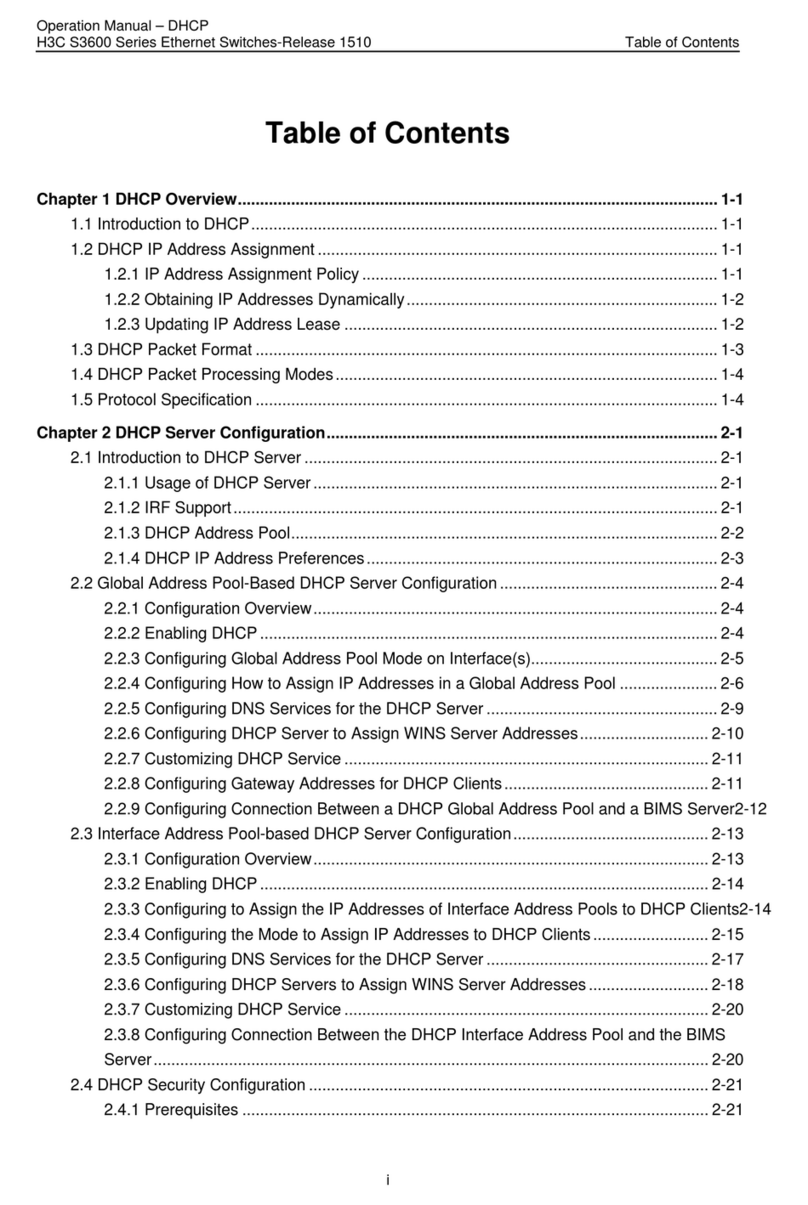
H3C
H3C H3C S3600 Series User manual
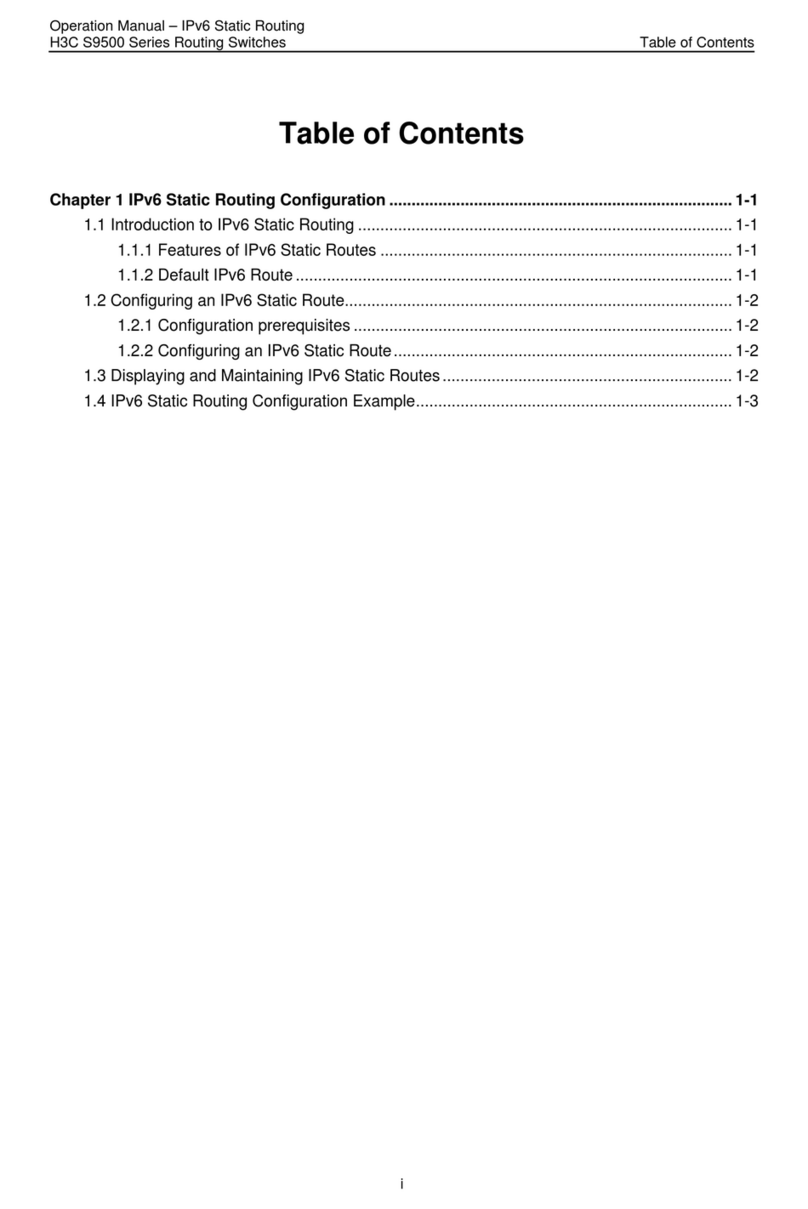
H3C
H3C S9500 Series User manual
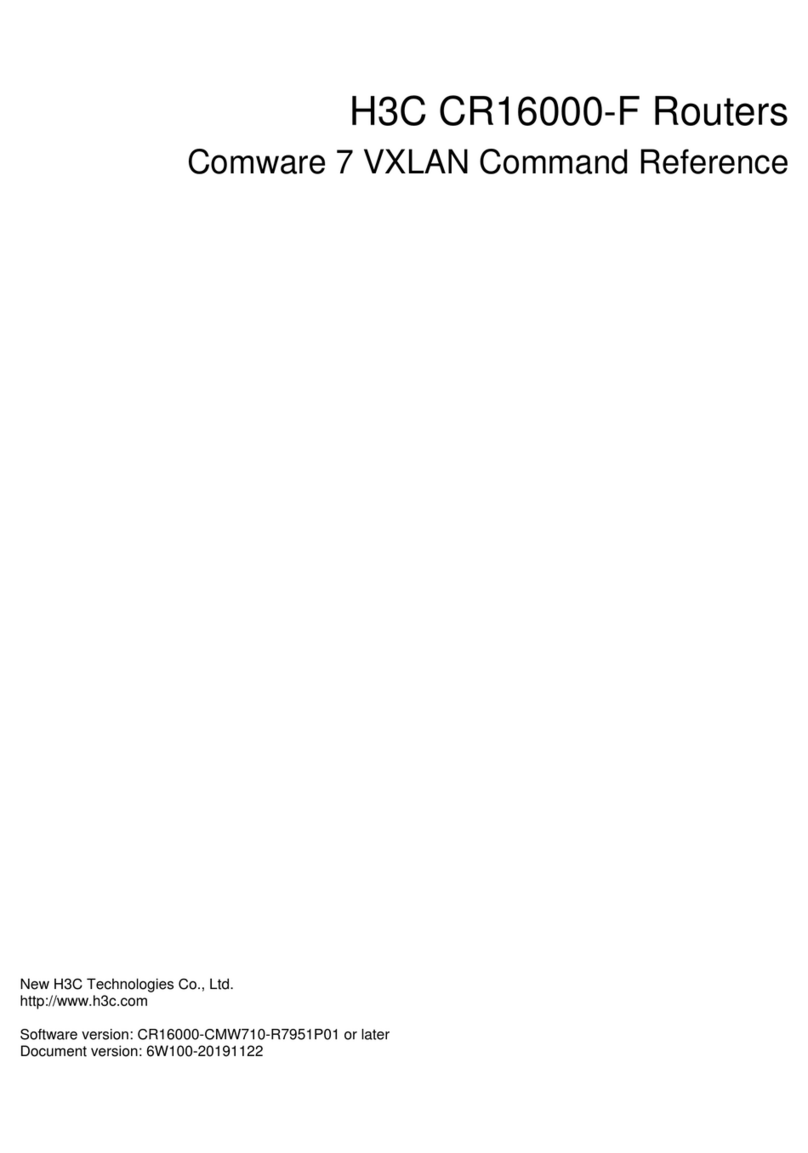
H3C
H3C CR16000-F Installation manual
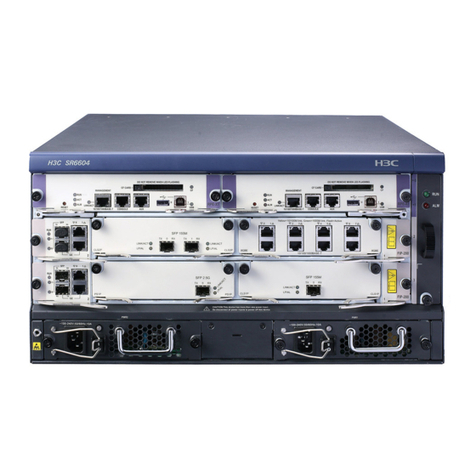
H3C
H3C SR6604 User manual
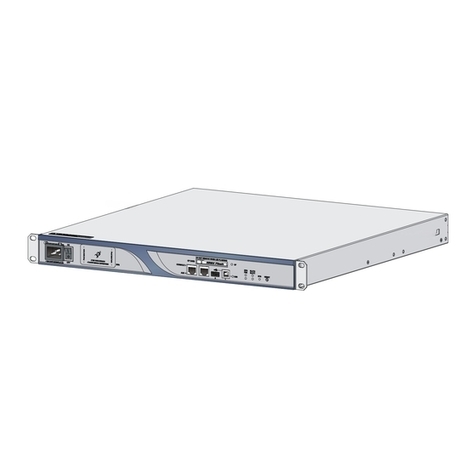
H3C
H3C SR6602 User manual
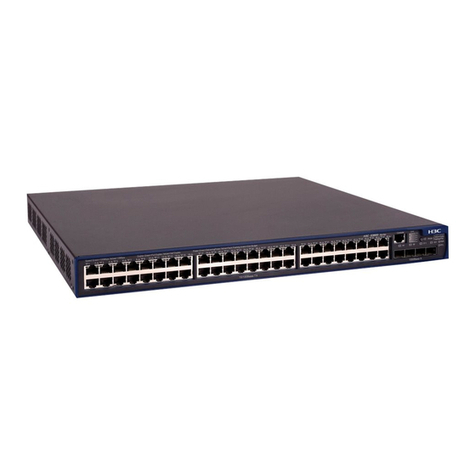
H3C
H3C H3C S3600 Series User manual

H3C
H3C MSR 20 Series User manual

H3C
H3C H3C S3600 Series User manual
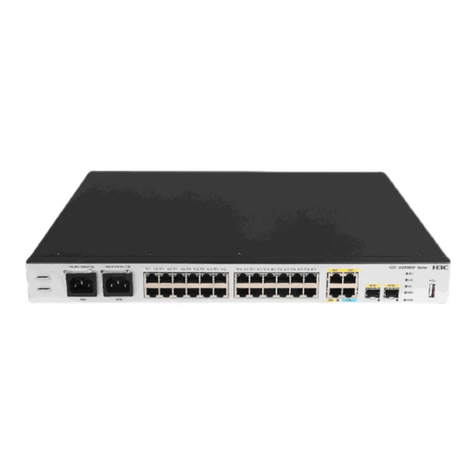
H3C
H3C MSR3600-28-X1 User manual

H3C
H3C SR6600 SPE-FWM User manual

H3C
H3C CR16000-M Operating and maintenance manual
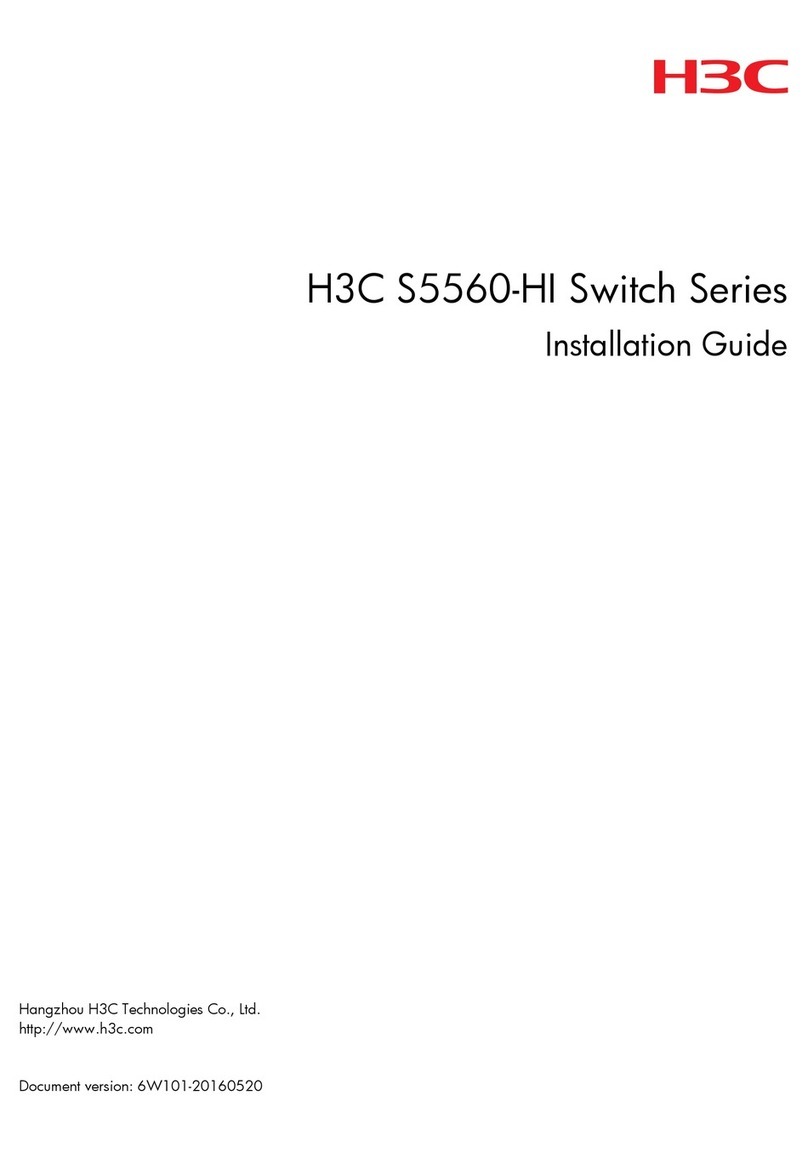
H3C
H3C S5560-HI Series User manual

H3C
H3C S3100-52P User manual

H3C
H3C S5500-EI series User manual
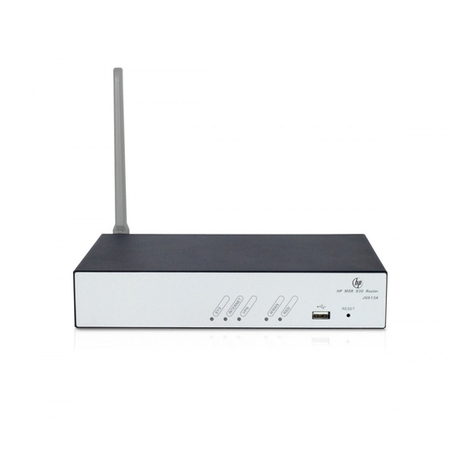
H3C
H3C MSR 930 User manual
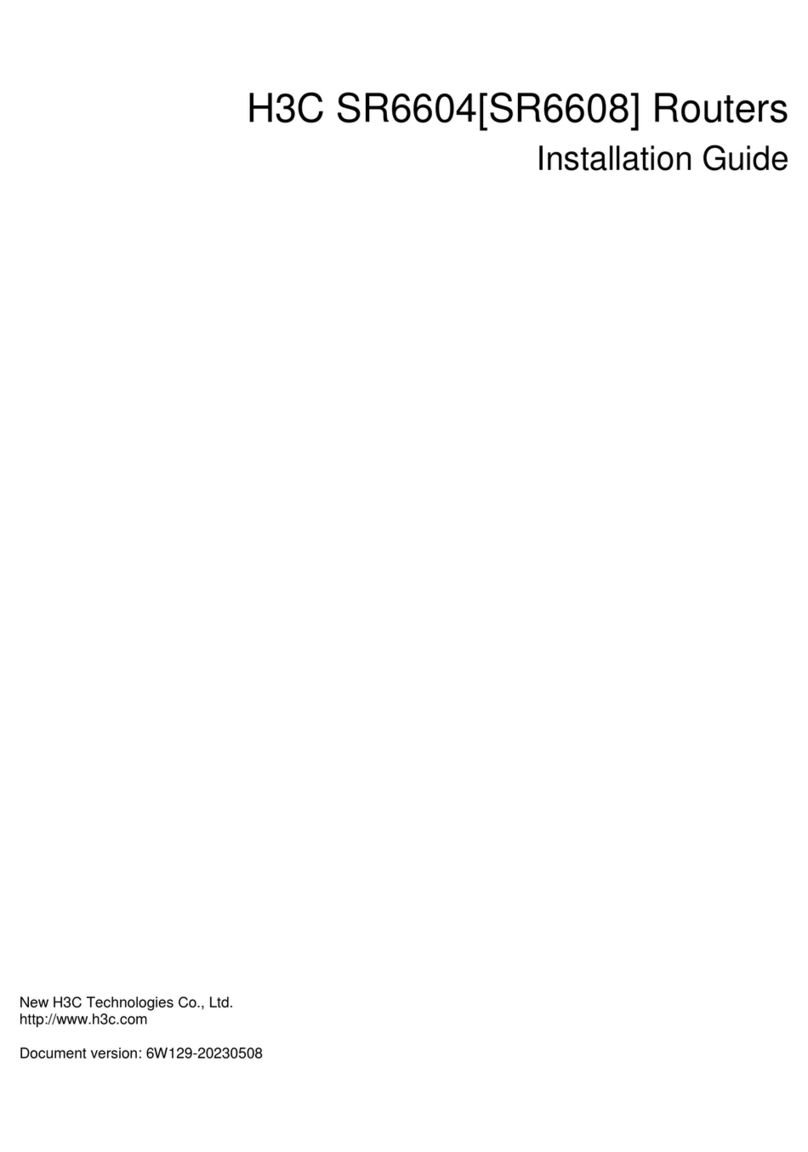
H3C
H3C SR6604 User manual
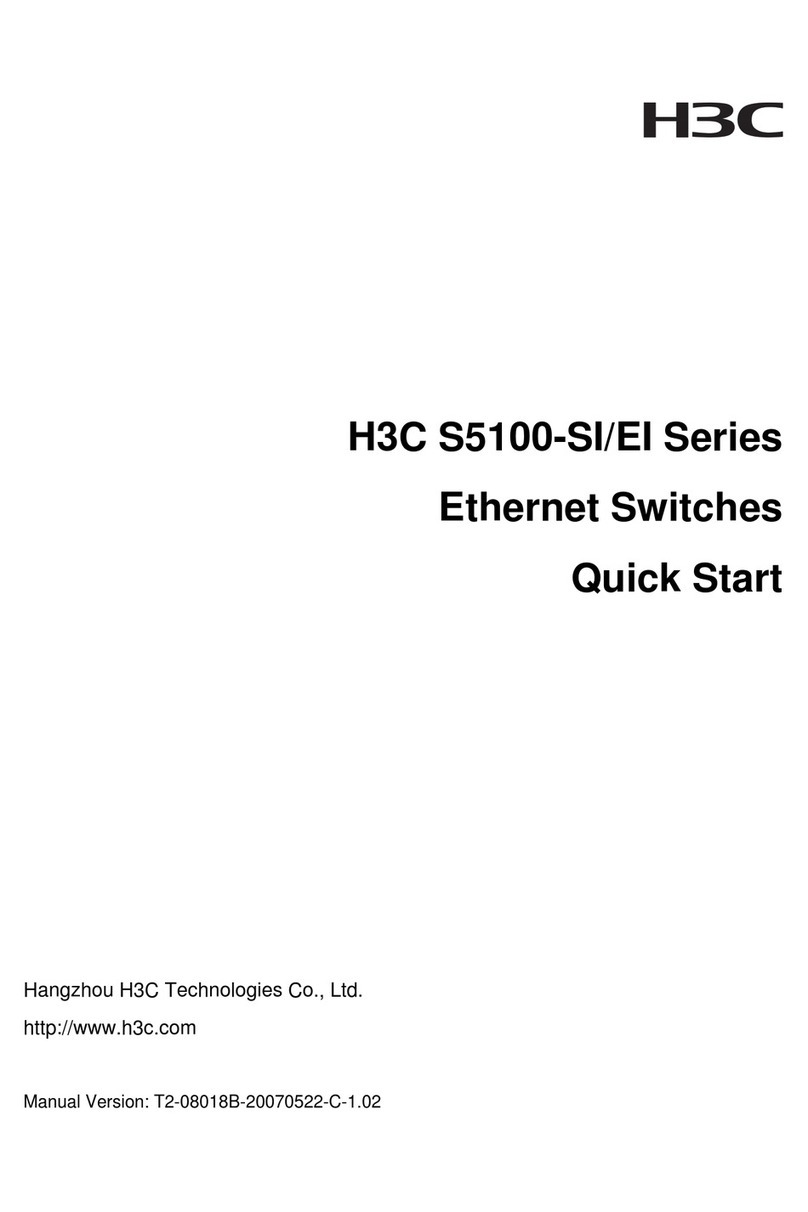
H3C
H3C H3C S5100-SI User manual
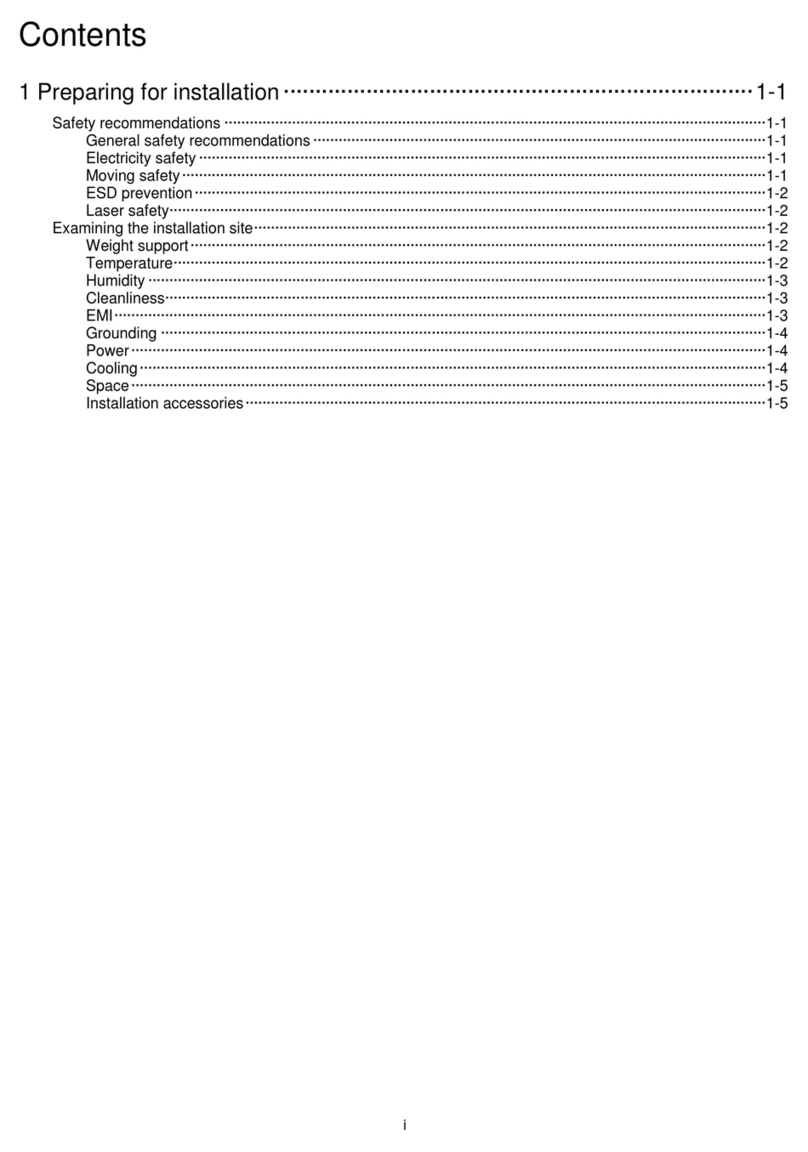
H3C
H3C S12500R-2L User manual
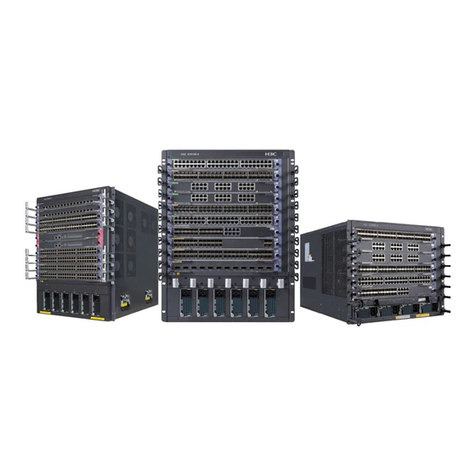
H3C
H3C H3C S7500E Series Installation instructions
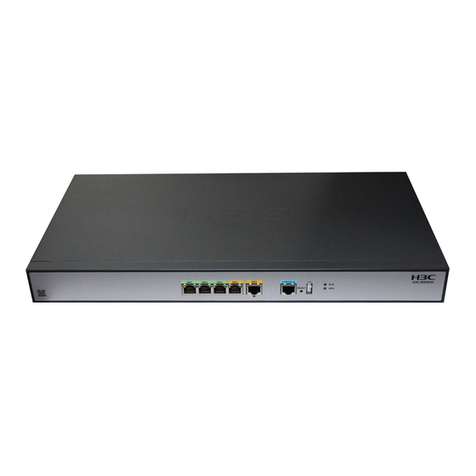
H3C
H3C MSR Series User manual
